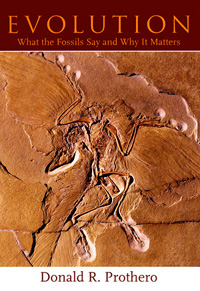In this week’s eSkeptic:

Skeptic Magazine
Now Available on Windows 8!
Enjoy Skeptic Magazine digital subscriptions and back issues on iOS, Android, PC, Mac, Kindle Fire (and HD), BlackBerry PlayBook and now on Windows 8! Click the button below to learn how to get the app on Windows 8 as well as iOS, Android, PC, Mac and other devices…
- Digital subscriptions $14.99 (4 issues)
- Digital back issues $4.99 each
- 44-page Preview Issue: free!
New App Version 4.9.4
now available for iOS
Use your App Store app on your iPad and iPhone to update to the latest version (4.9.4) of the Skeptic Magazine App. New features include:
- faster browsing
- performance and stability improvements
- a completely redesigned interface, and
- the ability to instantly begin reading an issue
while it is downloading!
Don’t Miss Best-Selling Author JARED DIAMOND January 5th

The World Until Yesterday:
What Can We Learn from Traditional Societies?
SATURDAY, Jan. 5, 2013 at 2 pm
Beckman Auditorium
Mega-bestselling author of Guns, Germs, and Steel and Collapse, Dr. Jared Diamond surveys the differences between “traditional” societies and industrial or post-industrial societies, with an eye to the question: what can we learn from the former that can make the world we live in a better place for all of us? Today, citizens of industrial states take for granted metal, writing, airplanes, police and government, overweight people, meeting strangers without fear, heterogeneous populations, and so on. But all those features of modern human societies are relatively new in human history.…
CALTECH LECTURE SERIES FLYER CORRECTION
In the flyer that went out in the mail announcing our Fall 2012 lecture series events at Caltech, this Jared Diamond lecture mistakenly read Sunday January 5. It should have read SATURDAY, January 5.
Followed by…
DR. W. PATRICK MCCRAY
Sunday, January 20, 2013 at 2 pm
Baxter Hall
In 1969, Princeton physicist Gerard O’Neill began looking outward to space colonies as the new frontier for humanity’s expansion. A decade later, Eric Drexler, an MIT-trained engineer, turned his attention to the molecular world as the place where society’s future needs could be met using self-replicating nanoscale machines…
New Admission Policy and Prices
Please note there are important policy and pricing changes for this season of lectures at Caltech. Please review these changes now.

More American
Than a Good Shag
SKEPTICALITY EPISODE 198
This week on Skepticality, Derek & Swoopy chat a bit about Christmas, then Derek interviews Mark Forsyth (“The Inky Fool”) about his latest book The Etymologicon: A Circular Stroll Through the Hidden Connections of the English Language. Find out about the secret origins of words and phrases (such as ‘shag’, or the seemingly innocent ‘feisty’), learn the social science behind how words and languages evolve, and discover why we use the words we use.
Get the Skepticality Podcast App
for Apple and Android Devices!
Get the Skepticality App — the Official Podcast App of Skeptic Magazine and the Skeptics Society, so you can enjoy your science fix and engaging interviews on the go! Available for Android, iPhone, iPad, and iPod Touch. Skepticality was the 2007 Parsec Award winner for Best “Speculative Fiction News” Podcast.
About this week’s eSkeptic
Just as there are still those who believe that the earth is flat (despite all the evidence), there are also those who argue that the earth is actually expanding. Expanding Earthers believe that, at some point in the past the earth was much smaller, and that all the continents fit together nicely. In this week’s eSkeptic, geologist Donald Prothero discusses why the notion of an expanding earth is false. Read Prothero’s full bio.
Cracked Earth and Crackpot Ideas
by Donald R. Prothero
Most educated people in modern society have no difficulty accepting the idea that the earth is roughly spherical, or that the Sun is the center of our solar system, and the earth moves around it. Nearly everyone shakes their head in disbelief whenever you tell them there are people who seriously believe in a flat earth or groups of people who after 500 years still don’t accept the discoveries of Galileo and Copernicus (www.galileowaswrong.com). Yet both of these long-rejected ideas have strong adherents, mostly creationists who use literal interpretation of the Bible to deny scientific findings that contradict scripture. For these people to continue clinging to these long-discredited ideas, they must ignore the hundreds of photos from earth and space that show its true shape (the flat-earthers claim the photos are NASA hoaxes, which I guess means that the Russian space agency must be in on the conspiracy, along with all who run other nation’s space programs). In addition, we now have space probes visiting all the planets on paths predicted by the heliocentric model, and some have looked back and taken shots that show the layout of the solar system, and the earth where it really is—and that it’s round! But in this age of the Internet, silly ideas like geocentrism can reach an audience of millions in minutes, without editorial fact-checking or scientific peer review, which most mainstream media still practice. Anyone with a hot idea, a computer and possibly some decent graphics or animation can cook up a wild theory and quickly generate hundreds of thousands of hits, and hundreds of favorable comments from those who can’t tell science fact from science fantasy.
Just one step less crazy that flat-earthism and geocentrism is another Internet fad: the expanding earth model. Currently, it’s got huge popularity due to an Internet video that’s gone viral at over 1.4 million views, produced by a comic book artist Neal Adams. Using modern computer graphics, he put together a gee-whiz animation that appears to show all the continents fitting together in the past on a much smaller globe. The video even plays the now overused opening chords of Richard Strauss’ Also Sprach Zarathustra (largely made famous by its use in Stanley Kubrick’s film 2001: A Space Odyssey) to create the appropriate sense of awe and wonder. If you read further, Adams then invokes the classic “fringe scientist” defense of contrarian beliefs: all scientists are wrong; they are in a great conspiracy to cover up the problems with their view of the world, and are under social pressure not to give his ideas a fair hearing. I’ve examined most of what he’s presented, and he clearly has no training or experience in geology or geophysics whatsoever, and no idea of the basic science of the earth he’s trying to rearrange.
Back in the 1950s and 1960s, the expanding earth idea was still not considered a truly crackpot notion. A prominent Australian geologist, S. Warren Carey, was the last legitimate scientist to be taken seriously on the idea of the expanding earth (his final book on the topic was published in 1975), since he pointed to the obvious fit between South America and Africa, and how other continents fit together as well. But Carey’s idea was soon overshadowed by the immense amount of data that led to the modern theory of plate tectonics in the 1960s and 1970s, and explained not only Carey’s fit for continents pulling apart, but also showed that other continents were colliding as tectonic plates converged and subducted beneath one another. When I was in graduate school in the 1970s, Carey’s ideas were already an object lesson in the history of our science, a case history about how some good observations can go badly wrong in the interpretation, especially when new data disprove an old notion.
Yet just as notions discarded 500 years ago (flat-earthers and geocentrism) or 150 years ago (creationism) keep rising among those who know too little science, so too with the expanding earth idea. Over 50 years after S. Warren Carey, it has new life thanks to creative animation. And just like geocentrism and creationism, anyone with a few college courses in geology can easily dismiss it, since Adams’ animation completely ignores geology (in which he has no experience), just as creationist “flood geologists” ignore 99% of geology in order to explain the Grand Canyon in terms of Noah’s flood.1
At first glance, Adams’ fluid animated cartoon can easily be mistaken for reality. But there are lots of mismatches that you don’t notice since the animation goes by very quickly. But let’s consider some actual geology, rather than quibble over deceptive animation:
The fit of South America and Africa is, of course, real. It was first noticed by cartographers when the first good maps of the South Atlantic were published around 1500, and was used as evidence by the early advocates of continental drift, including Alfred Wegener and Alexander DuToit, as well as S. Warren Carey. But the reason the fit is taken seriously is that there are geologic trends (such as glacial striations) and identical rock types in the bedrock on each side of the Atlantic that match up when you close the Atlantic to its configuration about 250 million years ago. There are also matches in the bedrock between the rest of the Gondwana continents (India, Africa, Australia, and Anarctica), and bedrock similarities found in eastern North American and North Africa that formed before the North Atlantic opened up. But no such matches in bedrock geology exist between the other continents that Adams’ animation squeezes together, especially those around the Pacific Rim, which geologic evidence shows have never been closed, unlike the Atlantic.
The fit of continents in Adams’ animation is illusory, since he is matching the shape of the modern shorelines of the landmasses that are currently above water. The true edge of each continental plate, however, is the edge of the continental shelf and the shelf-slope break, which is typically 1500–2000 meters below modern sea level. If you use this for the shape of the continent, the fit between South America and Africa improves (as geophysicist Sir Edward Bullard showed in the 1960s), but there is no fit for most of the other continents that Adams smashes together.
The expanding earth model ignores a gigantic amount of paleomagnetic data collected from rocks of every age on every continent in the past 50 years. These data clearly show that the earth could not have expanded more than 0.8% in the past 400 million years.2 I’ve collected, analyzed, and published some of this data, and you can tell from the inclination angle of the specimens the paleolatitude of any given sample. If you look at all the samples of the same age over a range of latitudes (say, 250 million years ago in the mid-Permian when Pangaea formed), there is no possibility of a significantly smaller earth radius at that time, or any other. Not only this, but the paleomagnetic data give precise positions and orientations of each continent through the past 600 million years, and these data do not support the fanciful motions suggested in Adams’ animation.
Plate tectonics have successfully explained a huge amount of data from biogeography and the ancient distributions of fossils as well (such as the distribution of Cambrian trilobites across the Atlantic, which would only work if the proto-Atlantic had closed in the late Paleozoic before reopening in the early Mesozoic). The strange motions of the continents in Adams’ video do not explain these data in any sense.
Plate tectonic models of the past motions of continents have successfully predicted where the climatically sensitive deposits of the world should be found in the past: glacial deposits on the poles, swamp deposits in the equatorial low-pressure belts, and desert deposits in the subtropical highpressure belts. The animated cartoons of Adams and others fail to explain any of this.
We can actually measure the diameter of the earth now with great precision with hundreds of satellites, and these measurements show no evidence of the earth getting larger. The satellite data are sensitive enough to reveal individual mountain ranges rising, and local subsidence of basins, so we can detect uplift rates in the order of meters or less—and the same data clearly show the earth is not expanding during the decades that such data were collected.3 At the rates of expansion suggested by the current expanding earth models, we should be able to detect such expansion even in a few decades.
Using growth rings in corals and many other types of fossils that record the number of days in a year, we can easily calculate the gradual slowing of the earth’s rotation due to the tidal friction from the moon’s gravity. From this we can estimate any changes in the earth’s moment of inertia over the past 500 million years, and there is no evidence that the earth has gotten any larger in that time.4 Models of accretion or expansion on a scale required to significantly increase the radius of the earth do not match the known rates of accretion through geologic time. In addition, such expansion by accretion would release a lot of energy that would warm the earth’s interior much more than it actually is.
Models based on thermal expansion contradict the most basic principles of the rheology of the earth’s interior, and violate all sorts of constraints about the known mechanisms of melting and phase transitions within the mantle.5
Even a beginning geology student can tell you that there are two kinds of fault systems: extensional faulting (found when the earth’s crust pulls apart) and compressional faulting and folding (formed when the earth’s crustal blocks collide to form mountain belts). Most of the world’s great mountain belts (especially the Himalayas and the Alps, but in earlier times the Rockies and Appalachians) show clear evidence of having been formed by continental collisions and show tremendous amounts of contractional folding, shortening, and faulting due to compression. If you look at any of the expanding earth models, the continents move apart but do not collide, and thus they fail to explain most of the world’s mountains.
Expanding earth models argue vehemently that there is no subduction (the process whereby one tectonic plate slides beneath another and is remelted in the mantle). As a matter of fact, subduction is one of the best-documented processes in geology. Since the 1940s, the seismic Benioff zones have given us images of one plate plunging beneath another. The great Alaska Good Friday earthquake of 1964 first demonstrated one plate violently subducting beneath another, and the seismic evidence clearly showed that the plates were moving the manner predicted by subduction. Since then, every earthquake on a subduction zone (including the big Sendai, Japan quake of 2011) has shown similar behavior, and the seismic data clearly show the way the plates have moved. We can even use seismic imagery to “see” the plates sliding beneath one another.6 Without subduction, there would be no explanation for not only the seismic evidence of one plate plunging beneath another, but also the gravitational anomalies associated with subduction zones. Finally, there are many instances of ancient subduction zones that have been smashed into mountain belts and uplifted land (as in the Coast Ranges of California). These ancient subduction zones have a characteristic suite of rocks, especially blueschist metamorphics, which could only be formed in the high-pressure but relatively cool regions of a subducting plate.
These are relatively simple problems with the expanding earth model based on basic geology that any advanced geology student could enumerate. There is a much larger problem that the expanding earth models fail to address: the source of energy to drive the expansion. The video by Adams proposes simplistic ideas about physics and particle-particle interactions powering the idea of earth expansion (lampooned and debunked in this video). These ignore the huge amount of evidence to show that demonstrates the earth’s interior is not composed of hydrogen fusing into helium (as in the core of the Sun), but a core of both solid and liquid iron and nickel incapable of either expanding much, or producing that much heat.7
In short, the ideas of the expanding earth advocates strikingly resembles those of the creationist “flood geologists”: propose one simplistic model to explain a small part of the data, and then ignore the other 99% of the data that don’t fit. The science of geology does not considers these ideas plausible, since they contradict so much of reality. Not surprisingly, many of the “expanding earth” websites are also creationist websites, some of which use the “decreased gravity” of the earth to explain why dinosaurs could be so big! (Never mind the fact that unless you add mass to the earth, the expanding earth would have the same mass and gravity, just larger volume and thus less density). Pushing the expanding earth as an unscientific mechanism to explain myths handed down from the Bronze Age is certainly no way to enhance your credibility.
More importantly, the expanding earth model fails to explain the “consilience of observations” that has built and supported plate tectonics for the past 70 years. Like evolution or heliocentrism, plate tectonics is not just a single idea with only one line of evidence, but a multifaceted theory that explains thousands of observations and makes successful predictions about new observations. After decades of such observations, and the successful predictions that they produced, the burden of proof is on the expanding earth advocates to disprove every bit of evidence supporting plate tectonics. Likewise, after 150 years the burden of proof is on creationists to explain away the entire edifice of observations and successful predictions that support evolution. And the tired old tactic of calling scientists “close minded” and “conspiring against” the idea is unlikely to convince anyone who examines data and understands how science (with all its internal criticism, peer review, and willingness to listen to crazy ideas that might be plausible) works.
A word of advice to Neal Adams: stick to comic books. You’re out of your depth in geology. ![]()
References
- See Chapter 3 of: Prothero, Donald. 2007. Evolution: What the Fossils Say and Why it Matters. Columbia University Press.
- McElhinney, M. W., Taylor, S. R., and Stevenson, D. J. 1978. “Limits to the Expansion of Earth, Moon, Mars, and Mercury and to Changes in the Gravitational Constant. Nature 271 (5643): 316–321; Schmidt, P. W. and Clark, D. A. 1980. “The Response of Palaeomagnetic Data to Earth Expansion.” Geophysical Journal of the Royal Astronomical Society, 61: 95–100; Carey, S.W. 1975. The Expanding Earth. Elsevier, Amsterdam.
- Wu, X., X. Collilieux, Z. Altamimi, B. L. A. Vermeersen, R. S. Gross, and I. Fukumori. 2011. “Accuracy of the International Terrestrial Reference Frame Origin and Earth Expansion.” Geophysical Research Letters 38, L13304, 1–5.
- Williams, G.E. 2000. “Geological Constraints on the Precambrian History of Earth’s Rotation and the Moon’s Orbit.” Reviews of Geophysics 38 (1): 37–59.
- Beck, A.E. 1961. “Energy Requirements for an Expanding Earth.” Journal of Geophysical Research 66 (5): 1485–1490.
- Van Der Lee, S., and Nolet, G. 1997. “Seismic Image of the Subducted Trailing Fragments of the Farallon Plate.” Nature 386 (6622): 266.
- Beck, 1961, op cit.
About the Author

DR. DONALD R. PROTHERO was Professor of Geology at Occidental College in Los Angeles, and Lecturer in Geobiology at the California Institute of Technology in Pasadena. He earned M.A., M.Phil., and Ph.D. degrees in geological sciences from Columbia University in 1982, and a B.A. in geology and biology (highest honors, Phi Beta Kappa) from the University of California, Riverside. He is currently the author, co-author, editor, or co-editor of 32 books and over 250 scientific papers, including five leading geology textbooks and five trade books as well as edited symposium volumes and other technical works. He is on the editorial board of Skeptic magazine, and in the past has served as an associate or technical editor for Geology, Paleobiology and Journal of Paleontology. He is a Fellow of the Geological Society of America, the Paleontological Society, and the Linnaean Society of London, and has also received fellowships from the Guggenheim Foundation and the National Science Foundation. He has served as the President and Vice President of the Pacific Section of SEPM (Society of Sedimentary Geology), and five years as the Program Chair for the Society of Vertebrate Paleontology. In 1991, he received the Schuchert Award of the Paleontological Society for the outstanding paleontologist under the age of 40. He has also been featured on several television documentaries, including episodes of Paleoworld (BBC), Prehistoric Monsters Revealed (History Channel), Entelodon and Hyaenodon (National Geographic Channel) and Walking with Prehistoric Beasts (BBC). His website is: www.donaldprothero.com. Check out Donald Prothero’s page at Shop Skeptic.










